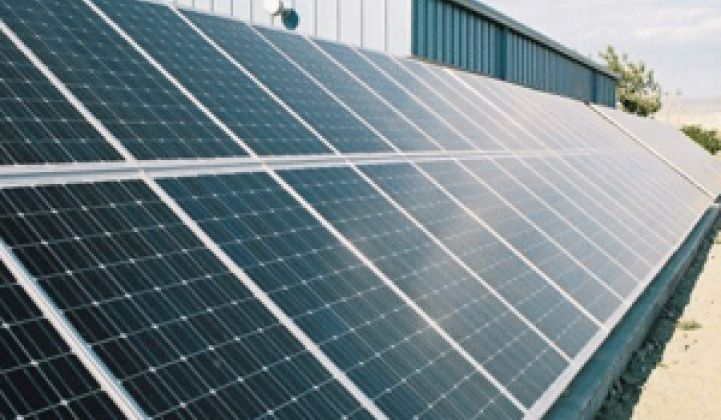Good old-fashioned crystalline solar cells are efficient at converting sunlight to electricity, but require a lot of silicon to make. Thin-films use less silicon – or none at all – at the expense of thicker cells' efficiency.
Silicon Valley solar entrant NanoGram Corp. wants to get the best of both worlds. The Milpitas, Calif. startup says it can make solar modules with crystalline silicon 35 microns thick – far thinner than the world's most efficient crystalline silicon modules, but with similar efficiencies – at a plant it's building in Milpitas and hopes to open by the end of 2009.
You can't call NanoGram's product thin film, since that terms is reserved for films that are only a few microns thick. So NanoGram has branded the name "SilFoil" for the material it makes by depositing silicon onto a reusable substrate, then crystallizing it to form crystal grains of up to a centimeter wide.
Since NanoGram can make that foil in module sizes, it can lift it away from the reusable substrate and make it into a module using cheaper processes similar to those available to thin-film manufacturers, Nanogram chief scientist Henry Hieslmair said this week at a Photon International conference in San Francisco. That will give the SilFoil-based solar modules, which will incorporate elements such as light trapping, back junctions, and back local contacts, a conversion efficiency similar to or better than today's commercial multi-crystalline silicon modules, he said.
Hieslmair didn't give efficiencies for the modules the company plans to make. But he did say NanoGram intended to make them for less than $1 a watt.
The $1-per-watt manufacturing cost is a holy grail-like number for thin-film solar panel makers using a variety of materials – amorphous or multicrystalline silicon, copper-induim-gallium-selenide (CIGS) or cadmium telluride – to cut costs.
So far, First Solar (NSDQ: FLSR) has come the cl osest with production costs of $1.08 in the most recent quarter for cadmium telluride thin-film modules with about 10 percent efficiency. Makers of CIGS thin films, like Nanosolar, Miasole, Solyndra, Heliovolt and others, promise greater efficiency, but haven't reached First Solar's installation levels yet.
And makers of amorphous silicon thin films – including customers of Applied Materials' and Oerlikon's turnkey thin-film fabrication lines – are still looking at lower efficiencies in the 6 percent range.
NanoGram has raised a total of $68.7 million from the likes of ATA Ventures, Nth Power, Rockport Capital Partners, SBV Venture Partners and, most recently, the Masdar Clean Tech Fund (see NanoGram Takes Lasers to Solar).
Hieslmair wouldn't say how many times NanoGram could re-use its substrate before it would need to be discarded, but promised it would be enough to make it worth using, compared to lower-grade alternatives.
Last month, NanoGram agreed to develop silicon deposition tools with Tokyo Electron Ltd. The Japanese semiconductor maker in February signed a 50 million yen ($500,000) deal to develop solar cell manufacturing equipment with Sharp Corp. Sharp, which lost the title of world's-largest crystalline silicon solar module maker to Germany's Q-Cells last year, has since opened a 160-megawatt thin-film factory and has laid plans to take half the thin-film market by 2012 (see Sharp Guns for U.S. Thin-Film Market).



